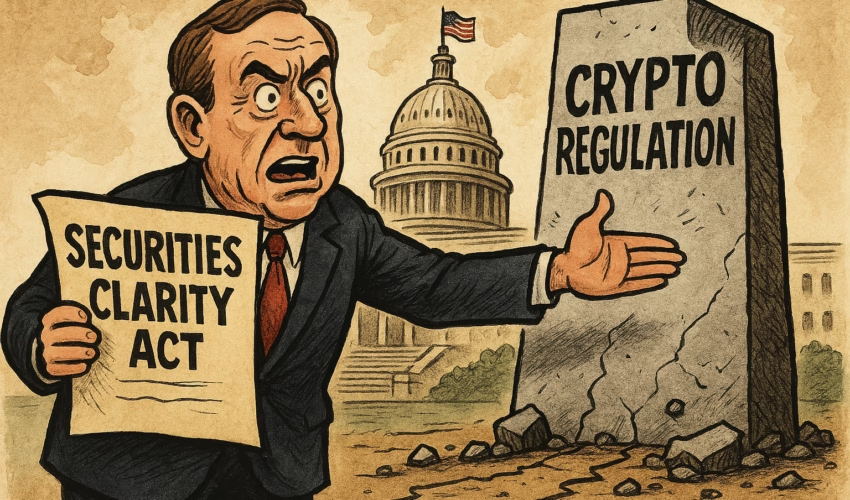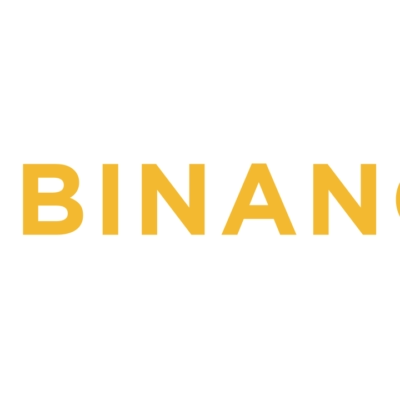Legislation aims to define digital assets more clearly under securities law, signaling bipartisan progress in crypto regulatory reform
U.S. House Majority Whip Tom Emmer (R-Minn.) and Representative Darren Soto (D-Fla.) have officially reintroduced the Securities Clarity Act, a key piece of bipartisan legislation aimed at clarifying the legal classification of digital assets under U.S. securities law. The bill is widely viewed as a foundational component of the broader Financial Innovation and Technology for the 21st Century Act (FIT21)—a sweeping market structure reform bill expected to advance in Congress in the coming weeks.
The Securities Clarity Act has been designed to eliminate the ambiguity that has long plagued the U.S. crypto industry, particularly around whether and when a digital asset is considered a security. Its passage would be a significant milestone for both regulators and the blockchain sector, offering entrepreneurs and investors legal certainty while preserving essential consumer protections.
Key Provisions of the Securities Clarity Act
At the core of the legislation is a legal distinction between a “digital asset” and an “investment contract”. This approach builds upon the Howey Test but adds a crucial clarification: the asset itself is not inherently a security, even if it is initially offered as part of an investment contract.
“Specifically, the Securities Clarity Act specifies that any asset sold as the object of an investment contract, now defined as an ‘investment contract asset,’ is distinct from the securities offering it was originally a part of,” the bill states.
In essence, the bill would allow a token to transition from being part of a securities offering to becoming a non-security asset once its distribution or utility meets certain criteria. This distinction could have sweeping implications for how projects are launched, traded, and regulated in the United States.
Emmer and Soto’s Bipartisan Push
Representative Emmer emphasized the need for regulatory clarity to fuel innovation:
“Entrepreneurs need clarity to calculate risk accurately, create new investment opportunities and grow our economy,” he said in an official statement. “Our legislation will help provide these answers and allow American investors to fully participate in digital asset technology without sacrificing consumer protections.”
Co-sponsor Darren Soto added that bipartisan cooperation is vital to modernizing U.S. financial policy. Their collaboration underscores the increasingly cross-party consensus on the need for crypto regulation that supports innovation while safeguarding market integrity.
The bill’s language has already been incorporated into the FIT21 Act, which passed the House Financial Services Committee last year with notable Democratic support, including from former House Speaker Nancy Pelosi. That momentum appears to be building again in 2025.
FIT21: The Larger Legislative Picture
The Financial Innovation and Technology for the 21st Century Act (FIT21) is a broader legislative package designed to establish a comprehensive regulatory framework for digital assets, including jurisdictional clarity between the SEC and the CFTC, clearer pathways for token registration, and standardized compliance requirements for exchanges and custodians.
At a recent DC Blockchain Summit, Rep. French Hill (R-Ark.), Chair of the House Financial Services Committee, indicated that a revised draft of FIT21 is likely to be unveiled within weeks. The updated version may incorporate the Securities Clarity Act in full or include further refinements in response to market feedback.
Industry and Political Reactions
Ron Hammond, senior director of government relations at the Blockchain Association, hailed the Securities Clarity Act’s reintroduction as a “bipartisan precursor” to eventual market structure legislation.
“This bill is a crucial step forward,” Hammond told The Block. “It’s fair to say this continued momentum will be evident in the eventual crypto votes in Congress.”
He also noted that recent bipartisan support in repealing certain crypto tax provisions—supported by figures such as Senate Majority Leader Chuck Schumer—signals a more cooperative regulatory environment taking shape in Washington.
The reintroduction of the Securities Clarity Act is likely to be positively received by the digital asset industry, which has long criticized the SEC’s “regulation by enforcement” approach. Projects like Ripple (XRP) and Coinbase have faced legal battles stemming from unclear classifications, prompting calls for legal reform and Congressional guidance.
Investor Takeaways
For crypto investors and institutional stakeholders, the reintroduction of the Securities Clarity Act is a meaningful step toward regulatory transparency:
-
Legal certainty for tokens: Distinguishing the asset from the investment contract may allow tokens to shed securities status post-distribution.
-
Improved exchange listings: Clarity in asset classification could simplify the listing process for U.S.-based exchanges.
-
Reduced enforcement risk: Startups and projects would be less exposed to retroactive penalties or SEC scrutiny if they follow clear guidelines.
-
Market confidence boost: Institutional investors, in particular, may increase exposure to compliant digital assets once a framework is codified into law.
The bill’s alignment with FIT21 also suggests that a comprehensive digital asset policy is not only in the works, but may have the bipartisan support needed to clear both chambers of Congress—a rare feat in the current political climate.
Conclusion
The reintroduction of the Securities Clarity Act reflects a growing recognition among lawmakers that the U.S. must modernize its securities laws to accommodate the realities of blockchain-based finance. By clearly distinguishing digital assets from the securities contracts through which they may initially be sold, the bill offers a much-needed blueprint for fostering innovation without compromising on investor protections.
As Congress prepares to advance FIT21 and other key crypto initiatives, the Securities Clarity Act is emerging as a cornerstone of next-generation U.S. crypto policy—one that could help bring order, growth, and legitimacy to an industry long in search of regulatory direction.












